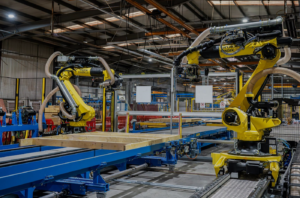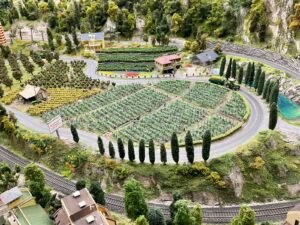We need a broad definition of community energy
 There’s a standard local newspaper photo emerging which will come up if you search for ‘community energy’ on the internet. It’s of a group of happy people surrounding their renewable energy installation, often waving their share certificates and looking jolly pleased with themselves.
There’s a standard local newspaper photo emerging which will come up if you search for ‘community energy’ on the internet. It’s of a group of happy people surrounding their renewable energy installation, often waving their share certificates and looking jolly pleased with themselves.
And so they should, since they have invariably laboured long, unpaid hours on top of full time jobs and family commitments to make their project a success.
But it will be a great shame if the government’s community energy strategy (due for publication today) crystallises ‘community energy’ merely as this one type of project, fitting an easy-to-digest template that can be photographed for a local paper and neatly described as ‘some sort of renewable energy generation owned by a local co-op’. Because, despite its emerging status as the darling of local press (and The Guardian), ‘community energy’ remains a nebulous, poorly and generally narrowly defined concept, focused on renewable energy generation. So it’s important that the new strategy defines it broadly.
The strategy must recognise that it needs to serve a much wider range of communities in need of action on sustainable energy. And it should acknowledge that those communities who are most in need of a sense of agency and control over their energy spending are often those who have the least available social capital (i.e. available expertise willing to volunteer for the local collective good) to do anything about it.
The strategy must also support a wide range of actions by communities, particularly on energy efficiency, fuel poverty and behaviour change, because that’s where the best ‘effort-to-impact ratio’ exists. This sort of activity isn’t easy to ‘package up’ as a defined project, but that doesn’t mean it doesn’t need support. And the range of actors who could, and should be involved is much broader than those who are currently the most visible face of community energy.
In saying that, I’m not at all suggesting that the strategy shouldn’t support community energy generation as well. But it will fail if it creates a sense that community energy generation assets are, and should remain, ‘other’; a niche volunteer-driven activity that therefore barely registers in any official calculations about whether we can keep the lights on in the future. It shouldn’t put community energy projects like this into the corner, a pious alternative for those who can choose to ‘opt out’, used as a propaganda tool against the traditional energy supply system: ‘We’ve done this on our own. We don’t need the big players’.
Doing so will only serve to create a privileged group of middle-class professionals, who can understand and take advantage of the growing range of new tools and income-generating support mechanisms on offer. Meanwhile, those at the bottom of the heap, financially and educationally, have neither the money, the skills or the knowledge to really benefit.
To make sure that doesn’t happen, the strategy needs to lead to more investment in ‘big-picture’ local energy planning and consultation so that every community understands the resources it has available and the contribution it should make to meeting national sustainable energy targets. Otherwise, it creates risks that community energy projects will fail to make the most of the local renewable resource available, build under-sized projects and thereby underperform against what as a community the nation needed from them.
That’s also why the strategy needs to address what will make community ownership structures attractive to commercial renewable energy developers and help to create new markets for those developers to bring forward projects in partnership with local communities with the express purpose of selling them into real local ownership structures. This is because the idea that a meaningful contribution from community owned renewables can be delivered at any scale without the involvement of professionals with strong commercial know-how is deluded.
To achieve this, the strategy will need to stimulate interest in all sorts of communities to save and generate energy, not merely respond to demands from the small number of communities who have already worked this out. And it will need to create opportunities for a new sort of commercial developer engagement that’s quite different from the standard (and fairly unsubtle) attempt to merely buy-off communities to accept developments in their area, through ever greater community benefit payouts.
To date that hasn’t done much to make nuclear or wind more popular (and it’s unlikely to work for fracking either) because the figures will always speak for themselves; if the developer is handing over significant sums to the local community as a matter of course and all the community has to do to get it is lie back and think of England, you can bet that it’s only a tiny fraction of what the real project owner is making themselves. That creates mistrust and accusations of bribery. So communities must become active participants and owners in their energy supply and use if they want to reap the real rewards.
Of course, any sort of proactive planning for community ownership of our national energy infrastructure means that the strategy must be strongly linked to the planning system. So let’s hope DCLG have been consulted on its drafting and consider themselves a key player in the implementation. And a strategy that doesn’t count local authorities, social housing providers, parish and town councils among the key players who can deliver ‘community energy action’ won’t get far, because in some communities they will be the only institutions that can feasibly take this on.
Linked to this, there has to be a determination to influence the locally elected representatives who should (but very often don’t) think about energy use and energy generation as something that local people should be positively and proactively engaged with.
Broad community ownership of renewable energy in particular could go some way to transforming the distribution of wealth in the UK since some of the poorest areas have some of the best renewable energy resources. In fact, our energy use is perhaps the only issue that affects us all which offers such enormous opportunities to generate and save money within local communities, and our elected representatives need to get their heads round that. Fast.
So, we believe the strategy will be a success if it:
- defines ‘community energy’ as a broad spectrum of activity, from that photogenic solar array surrounded by happy shareholders to the drop-in energy advice session at the neighbourhood centre run by the local social landlord with support from the local authority.
- ensures that the planning system, and especially the localism agenda, is one of the main tools for stimulating community action on energy.
- supports community-based action on fuel poverty, encouraging energy use behaviour change, and the installation of energy efficiency measures at least as much as it promotes community ownership of energy generation.
- acknowledges that elected representatives and local government structures are key to achieving action at scale and in a strategically coherent fashion across the country
- creates real opportunities for new types of community-commercial partnerships.
In the tradition of all good strategies, it will most likely say all things to all people, and writing it is only the first step in the process. The biggest hurdle – delivering on it – will only be overcome if it’s owned and supported, both politically and financially, across DECC, DCLG, and HM Treasury, as a minimum.
- More information on the Centre for Sustainable Energy can be found here: www.cse.org.uk/communities
- CSE’s full response to the call for evidence can be downloaded here: www.cse.org.uk/news/view/1750
















Rachel
Your article makes sense and would like to discuss further. I am promoting the concept within Conwy County in North Wales and have narrowed the search to Colwyn Bay where we have the biggest potential for funding a district heating scheme that could link with housing renewals/community/ Public Sector and commercial clients. We have gone as far as heatmapping and thoretical routes however need a lot more detail and technical work before going public. Are you happy to pass on any examples of good practice? Regards Allan (Princpal Property Development Officer, Conwy)